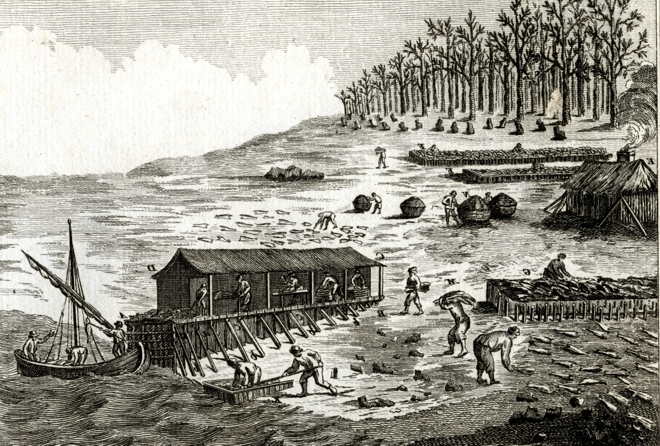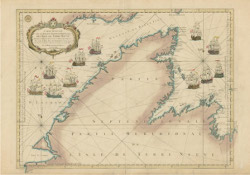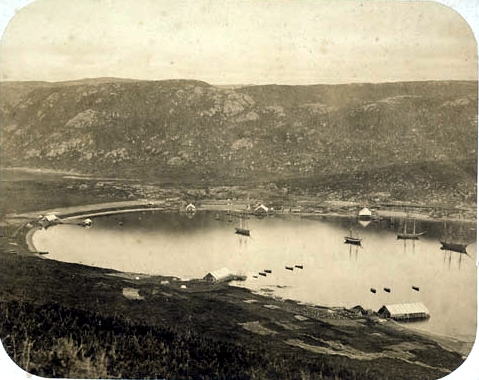The Migratory Salt-Cod Fishery
The transatlantic, migratory, salt-cod fishery is a dinosaur of economic history: once huge, but now extinct. From about 1500 to 1900, it played a key role in the European world economy by providing a storable, nutritious, protein-rich food. Crews came from Portugal, Brittany, Normandy, the Basque Country of France and Spain, the West Country of England and Ireland to fish on Canada's Atlantic coast.
The dry salt cure used in the stationary shore fishery worked well in the temperate climate of Atlantic Canada and produced a stable food product, well-suited to markets in the Mediterranean and the Iberian Peninsula. Fishermen from all over Europe were familiar with the land-based dry cure and used it when fishing inshore. Crews fished in boats rather than from the ships which brought them across the ocean.
For centuries, migratory crews seasonally exploited Atlantic Canada, notably Cape Breton, Quebec's Gaspé Peninsula, the lower north shore of the St Lawrence, southern Labrador, and several parts of Newfoundland. From about 1510, until France surrendered its rights in 1904, migratory fishing crews from Brittany and Normandy used seasonal shore stations on Newfoundland's Petit Nord.


